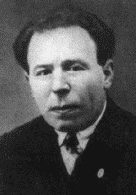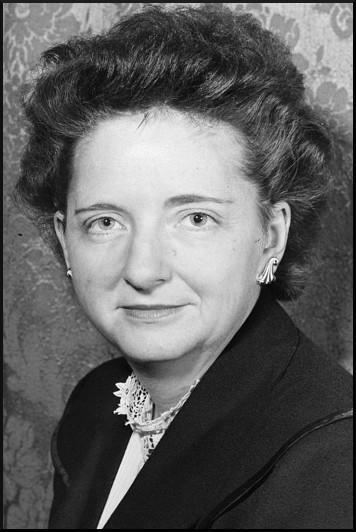Name Jacob Golos | Died November 27, 1943 | |
 | ||
Jacob Golos (born Yakov Naumovich Reizen, Яков Наумович Рейзен; 1889–1943) was a Ukrainian-born Bolshevik revolutionary who became an intelligence operative on behalf of the USSR in the United States. A founding member of the Communist Party of the United States of America (CPUSA), around 1930 Golos became involved in the covert work of Soviet intelligence agencies, including the procurement of American passports by means of fraudulent documentation and the recruitment and coordination of the activities of a broad network of agents.
Contents

Early years
Yakov Naumovich Reizen was born April 24, 1889, in Ekaterinoslav, Russian Empire, now Dnipropetrovsk in Ukraine, to a Jewish family. Yakov's father worked as a shop assistant. In addition to Yakov, the Reizen family included two more brothers and three sisters. Real name (the entry in the register, Holy Trinity Church in the city of Ekaterinoslav) Jacob Naumovich Golosenko.
A revolutionary from a young age, Reizen joined the Russian Social Democratic Labor Party (RSDLP) in 1904, becoming active in the group's Bolshevik wing headed by V.I. Lenin.
Reizen was a participant in the 1905 Revolution, serving as a member of the first soviet of Ekaterinoslav, a city known today as Dnipropetrovsk.
In 1906 Reizen organized an illegal revolutionary printing press, for which he was arrested in the last days of that year. Reizen was subsequently convicted and sentenced to eight years of hard labor, a term ultimately commuted to lifetime exile to Yakutia in northern Siberia by the government of Tsar Nikolai II.
Emigration to America
Reizen escaped by fleeing to the east, traveling to America by way of China and then through Japan. In the United States at some point he adopted the surname "Golos," by which he will subsequently be known here. Golos landed first in San Francisco in 1909, where he obtained work in a print shop as a pressman.
By 1912, Golos had found his way to New York City, where he helped to raise funds for political prisoners in Russia. Golos was active in the Russian Socialist Federation and in May 1915 gained membership in the Socialist Party of America when the Russian Federation joined the Socialist Party of America.
Golos returned to California in 1917, where he obtained employment working for fruit picking and packing firms and working as an organizer for the Socialist Party of California. He remained in California until 1919.
Towards the end of August 1919 Golos was elected to the Central Executive Committee of the Russian Federation by the organization's 5th Convention, held in Detroit. Immediately after the close of the Detroit gathering, Golos and a number of his comrades in the Russian Federation, including Alexander Stoklitsky and Nicholas Hourwich, traveled to Chicago to attend another convention which established the Communist Party of America, forerunner of the Communist Party, USA.
In his personal history and personnel forms written and filled in Moscow in 1926, Golos dated his work as the member of the Central Committee of the Russian Section (New York) as 1919-1925. In December 1922, Golos was elected to the nine member Bureau of the Russian Federation of the Workers Party of America, the "legal" public face of the then underground Communist Party of America.
In 1921-1922, Golos worked as an organizer at the Communist Party HQ in Chicago, and in 1922-1923 he was an organizer for the organization in its Detroit district. In 1923 Golos became head of the Society for Technical Aid to Soviet Russia, one of the party's technological aid initiatives and worked in that capacity until 1926.
In 1926 Golos travelled to the Soviet Union as a participant in the American "Kuzbas" industrial colony, located near the Russian city of Kemerovo. His membership was once again transferred to the All-Union Communist Party (bolsheviks), the VKP(b), in this interval. When the Kuzbas project was essentially terminated in 1927, Golos was transferred to Moscow where he was offered a job in a book publishing house.
The year 1927 saw the establishment of an institution with which Golos would later become intimately connected in the United States, a Communist Party-sponsored travel agency called World Tourists, Inc.. Originally started as an economic venture intended to help subsidize the Communist Party's press, the firm ultimately served not only as the coordinator of propaganda tours to the Soviet Union but also as a mechanism for facilitating the transit of party officials and Soviet agents back and forth between the USSR and the USA, sometimes under the cover of falsified documentation.
In September 1928, American Communist Party leader Jay Lovestone, noting Golos' "significant influence among the Russian working masses in the United States," sent an appeal to the Central Committee of the VKP(b) that Golos be returned to the United States for work there. A second appeal along these lines was made in December 1928, leading to Golos' return to the United States around the first month of 1929.
Espionage activity
Golos settled once more in New York City, this time in the borough of the Bronx, working as the business manager of Novyi Mir (New World), the Communist Party's Russian-language newspaper, based in New York City. Included in Golos' activities was coordination of the CPUSA's operation producing false passports for party members wanting to travel abroad. Golos remained in charge of the passport operation until turning the job over to Hungarian party functionary J. Peters, who also served as a link with the Soviet intelligence in 1930s; according to Peters' biographer the transfer took place in 1932.
In the spring of 1930, Golos became involved in the Communist Party's "machinery of investigations," charged with keeping tabs with the activities of a number of labor unions and party-affiliated mass organizations. Golos seems to have begun working for the secret intelligence apparatus of the Soviet Union by this time, as it was in 1930 that his name first begins to appear in archival documents as a "reliable man."
According to archival notes taken in the early 1990s by a former KGB foreign intelligence officer and journalist Alexander Vassiliev, Golos' initial contact seems to have been with the GPU's New York station chief, Chivin ("Smith"). Another interpretation of the documents, favored by historian Svetlana Chervonnaya, argues that first contact was made by Abram Einhorn ("Taras"), a Soviet intelligence agent who worked in the United States from 1930 to 1934. Regardless of who brought him into the fold, it is clear that by the early 1930s, Golos was in the employ of Soviet intelligence.
By the start of 1933, Golos was heading the Communist Party's World Tourists venture, an operation served as a source of funds for various CPUSA activities. Golos was active in the acquisition and supply of American naturalization papers and birth certificates, which were used to obtain American passports to "legalize" Soviet intelligence agents around the world — initially in Europe and Asia but later in the Americas as well. In order to convert these fraudulent application papers into authentic passports, Golos worked closely with a clerk in the Brooklyn passport office with a gambling addiction.
During this period Golos was identified by his Soviet intelligence handlers with the code name "Sound" — a pun on his adopted surname of Golos, the Russian word for "voice."
Throughout the 1930s Golos sat as a member of the CPUSA's Central Control Commission, a body in charge of party discipline, background investigations, and audits. This position placed Golos in an enviable position to assist in the recruitment and verification of potential agents on behalf of Soviet intelligence.
As head of World Tourists, Golos visited the Soviet Union every year from 1932 onwards to attend the celebrations of the Bolshevik revolution of 1917. This coincidentally gave him an opportunity to bring his Russian-born wife and American-born son there in 1936, so that his son could receive "a Soviet education." In 1937, the pair entered into the Soviet citizenship.
The last of these visits took place in 1937, during the height of the Ezhovshchina — the mass campaign of secret police terror in which millions of Soviet citizens suspected of political disloyalty, espionage, or economic crime were arrested and hundreds of thousands executed, with millions more sent to the brutal labor camps of the Gulag. Upon his return in January 1938, Golos confirmed at a session of the governing Political Committee of the American Communist Party that there was indeed a mass secret police operation in effect in the USSR. Golos' faith in the communist cause seems to have remained unshaken in the aftermath.
Vassiliev's notes revealed that in late 1940, Golos recruited Ernest Hemingway with the code name: "Argo" who had offered to work covertly for the soviets.
From 1940 onwards Golos was subjected to the Foreign Agent Registration Act and while he didn't curtail his NKVD activities he had to assume he was under FBI surveillance. Moscow became nervous at the risk of him being arrested and made attempts to convince him to return to Russia. Worried that if he returned to Russia he would be jailed or killed Golos not only refused to share his sources with other NKVD officers he also told them that he had hidden a sealed envelope containing details of Russia's spy operations in America.
In 1941, Golos had set up a commercial forwarding enterprise, called the U.S. Shipping and Service Corporation, with Elizabeth Bentley, his assistant, courier and lover, as one of its officers. The pair occupied a suite in the Commodore Hotel, in New York City, across the street from Amtorg.
In 1942, Golos transferred a Communist cell of engineers headed by Julius Rosenberg into the direct contact with Soviet intelligence operatives in New York. The cell provided information on newest developments in electrical and radio engineering to the XY Line of the NKGB foreign intelligence. The XY Line began efforts to penetrate the Manhattan Project, code-named ENORMOUS (ENORMOZ).
Sometime in November 1943, Golos met in New York with key figures of one of the so-called "information group" of CPUSA which would come to be known as the Perlo group, whose members worked in several government departments and agencies in Washington, D.C. and provided information to the CPUSA leader, Browder, the General Secretary of the Communist Party USA.
Death and legacy
Golos suffered a series of heart attacks during the first years of the 1940s. On November 27, 1943, a fatal heart attack ended his life while he was sleeping with Elizabeth Bentley. Immediately Bentley began a search for and after locating it destroyed secret file that Golos had used to protect himself from being recalled to Russia.
Golos's legacy can also be read about under Harry Dexter White, Nathan G. Silvermaster and Elizabeth Bentley.
Following his death, Elizabeth Bentley took over Golos's espionage operations.
The code name "Zvuk" (Sound) appears in the Venona decryptions as a Soviet source and has been identified as Jacob Golos. In these decrypts, Golos is identified as an “illegal colleague,” generally meaning a Soviet officer or professional agent who operated without the protection of diplomatic or official status with a Soviet embassy or consulate. Soviet officers with the latter status were said to be “legal.”
